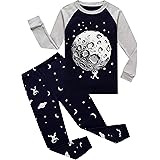The garment draped over a chair, a seemingly innocuous piece of cloth, often holds more stories than we realize. This everyday object, integral to our lives, moves through a complex journey from raw material to personal expression. Watching the video above, one is reminded that this journey is not always gentle on our planet. The speaker, a couturier by profession, beautifully articulates how clothing acts as both a functional necessity and a powerful tool for individual identity, yet concurrently highlights its profound environmental impact.
For centuries, the primary function of clothing was protection and modesty, a practical covering for the human form. However, as societies evolved, garments were slowly endowed with deeper meanings, becoming powerful markers of status, tribe, and individual personality. The speaker notes that fashion’s role in self-expression has been a constant, allowing individuals to project their unique identity into the world. It is this duality, the blend of utility and artistry, that makes the realm of fashion so utterly fascinating and deeply embedded in human culture.
The Environmental Costs of Modern Fashion
Despite its artistic merits and functional necessity, the modern fashion industry is recognized as one of the world’s most significant polluters. The production and consumption cycle for clothing has rapidly escalated, transforming a craft into an industrial behemoth. The industry’s vast scale means its environmental footprint is substantially larger than many consumers might anticipate, impacting various ecosystems globally.
Alarming statistics often underscore the severe ecological burden associated with clothing production. Fashion, for instance, is reported as the second-largest consumer of water globally, with enormous quantities required for irrigation of cotton crops and various dyeing processes. A significant amount of freshwater resources are diverted to produce raw materials for textiles, particularly in regions already facing water scarcity. This immense water usage contributes to localized environmental stress, affecting both human populations and biodiversity.
Additionally, the industry is estimated to be responsible for approximately 10% of global carbon emissions, a figure that rivals the emissions from international flights and shipping combined. This substantial carbon footprint arises from energy-intensive manufacturing processes, the widespread use of fossil fuels in synthetic fabric production, and the extensive global supply chains that transport garments across continents. Factories often rely on non-renewable energy sources, releasing greenhouse gases that contribute to climate change and air pollution.
Beyond water and carbon, the fashion sector contributes to various forms of pollution. Deforestation and soil degradation are linked to the expansion of certain fiber crops or the unsustainable sourcing of materials like rayon. Chemical dyes used in textile manufacturing frequently contaminate local water sources, releasing toxic effluent into rivers and oceans. Furthermore, synthetic fabrics, commonly found in many garments, are a significant source of microplastic pollution, shedding tiny plastic fibers into waterways during washing cycles which then enter marine ecosystems and the food chain.
Navigating Consumerism: Individual Actions and Systemic Challenges
Faced with such a grim environmental picture, individual consumers are often left pondering their role and responsibility. Many proposed solutions focus on shifting consumer behavior towards more mindful practices. These actions typically involve buying fewer items, extending the lifespan of existing garments through reuse and repair, and embracing upcycling to transform old clothing into new pieces. Supporting local ateliers and artisans, who often operate with smaller, more sustainable production cycles, is also frequently recommended.
The speaker highlighted a specific insidious facet of contemporary consumerism: the phenomenon of buying clothing purely for social media aesthetics, only to return it. Research cited by Barclaycard indicated that a whole 9% of people have purchased fashion items solely for the purpose of taking a picture, posting it online, and then returning the goods. This practice creates massive logistical and environmental waste, as returned items may require reprocessing, repackaging, or even outright disposal, contributing to overflowing landfills and unnecessary transportation emissions. The ease of online shopping, combined with inconsistent sizing, often exacerbates this return culture, further burdening the system.
The concept of “sizeism” was also questioned in the video, emphasizing that body measurements are fluid and unique, rather than static sizes. This perspective challenges the rigid sizing standards prevalent in fast fashion, which often lead to dissatisfaction and a higher propensity for returns. Acknowledging that bodies change over time, and even within a single day, promotes a more nuanced understanding of fit and encourages personalized garment creation over mass production.
Technology as a Pathway to Sustainable Fashion
While individual actions are important, systemic changes driven by technological innovation are seen as crucial for a truly sustainable future in fashion. The speaker expressed a strong belief in technology’s power, not as a replacement for human creativity, but as a friendly supporter in addressing the industry’s challenges. These technological advancements aim to reduce waste, optimize production, and enhance the consumer experience in an eco-conscious manner.
One promising area involves personalized fitting technologies. Advanced body scanning and artificial intelligence tools are being developed to accurately measure an individual’s unique body dimensions. This technology allows for custom-fit garments or highly accurate sizing recommendations, significantly reducing the guesswork associated with online shopping. When clothing fits perfectly from the outset, the need for returns is minimized, thereby cutting down on the associated transportation, packaging, and waste.
Extended Reality (XR), encompassing Augmented Reality (AR) and Virtual Reality (VR), also offers transformative potential. Virtual try-on experiences, where users can digitally visualize how clothes would look on their avatar or in their physical space via AR, could drastically reduce the reliance on physical samples and overproduction. Digital fashion, too, is emerging as an exciting frontier, allowing designers to create and showcase collections without producing any physical garments, thereby conserving resources and reducing waste associated with traditional sample production.
Another critical application of technology lies in mapping and managing existing fabric resources. Digital platforms are being created to track and inventory “deadstock” fabrics – unused textiles from previous collections or production runs – as well as post-consumer textile waste. These systems allow designers and manufacturers to access and utilize available materials, rather than constantly producing new ones. This approach aligns with the principles of a circular economy, where resources are kept in use for as long as possible, extracting maximum value and minimizing waste. The speaker’s personal practice of repurposing fabric remnants for items like face masks exemplifies this resourceful mindset, highlighting that value often resides in what might otherwise be discarded.
Embracing a Trendless Future and Individual Expression
Ultimately, these technological advancements could pave the way for a revolutionary shift in the fashion paradigm: a move towards “trendless fashion.” This concept champions individuality and personal style over the fleeting, dictated trends of mass-market fashion. By enabling personalized fit and encouraging the reuse of materials, technology empowers consumers to invest in timeless pieces that genuinely reflect their identity and last longer, rather than constantly chasing new fads. The idea that individuals could curate a wardrobe of personal classics, tailored to their unique measurements and aesthetic preferences, is an alluring prospect.
In this future, the role of creatives and artisans, like the speaker, would not diminish but rather evolve, shifting from trend dictators to facilitators of individual expression. Their expertise could be channeled into designing bespoke solutions and advising consumers on creating truly unique and sustainable wardrobes. The aspiration is for a fashion world that is more human-centric, less wasteful, and profoundly respectful of our planet’s limited resources. A truly sustainable fashion industry, therefore, is being sought, where thoughtful creation and conscious consumption converge.











